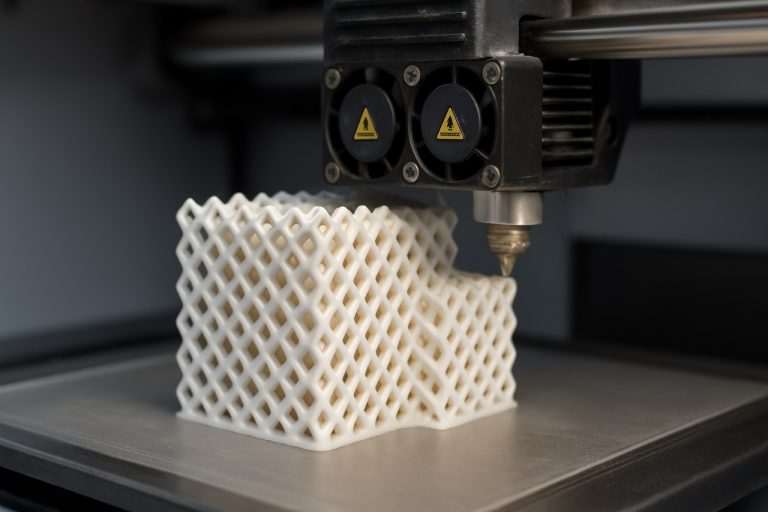
Quantum Secure Communications in 2025: How Quantum Tech Is Redefining Data Security and Driving Explosive Market Growth. Explore the Next Era of Unhackable Networks and the Forces Shaping the Industry.
- Executive Summary: Quantum Secure Communications Market at a Glance
- Market Size, Growth Rate, and 2025–2030 Forecasts
- Key Technologies: Quantum Key Distribution (QKD) and Quantum Random Number Generation
- Major Industry Players and Strategic Partnerships
- Adoption Drivers: Regulatory, Enterprise, and National Security Demands
- Barriers to Commercialization and Technical Challenges
- Regional Analysis: North America, Europe, Asia-Pacific, and Emerging Markets
- Use Cases: Financial Services, Government, Telecom, and Critical Infrastructure
- Future Outlook: Roadmap to Mainstream Quantum-Secured Networks
- Official Resources and Further Reading (e.g., idquantique.com, toshiba.co.jp, ieee.org, etsi.org)
- Sources & References
Executive Summary: Quantum Secure Communications Market at a Glance
The quantum secure communications market is entering a pivotal phase in 2025, driven by escalating concerns over data security in the face of rapid quantum computing advancements. Quantum secure communications, particularly quantum key distribution (QKD) and post-quantum cryptography (PQC), are being prioritized by governments, critical infrastructure operators, and leading technology firms to future-proof sensitive data against quantum-enabled cyber threats.
In 2025, several national and cross-border initiatives are accelerating the deployment of quantum-secure networks. The Deutsche Telekom AG and Ericsson are collaborating on quantum-safe communication pilots in Europe, while China Telecom continues to expand its quantum backbone, already spanning thousands of kilometers and connecting major cities. In the United States, the Atos and IBM are among the technology leaders integrating quantum-safe solutions into cloud and enterprise offerings, responding to the U.S. government’s push for quantum-resistant standards.
The market is characterized by a mix of established telecom operators, quantum technology startups, and cybersecurity vendors. Toshiba Corporation and ID Quantique are recognized for their commercial QKD systems, with deployments in financial services and government networks. BT Group is piloting quantum-secure metro networks in the UK, while QuantumCTek is a key supplier in China’s national quantum communication infrastructure.
Regulatory momentum is also shaping the market outlook. The U.S. National Institute of Standards and Technology (NIST) is finalizing post-quantum cryptography standards, expected to be adopted by federal agencies and critical infrastructure operators in the coming years. The European Union’s Quantum Flagship program is funding large-scale quantum communication testbeds, aiming for operational cross-border quantum networks by the late 2020s.
Looking ahead, the quantum secure communications market is poised for robust growth through 2025 and beyond, as organizations transition from pilot projects to scaled deployments. The convergence of QKD, PQC, and classical encryption is expected to define best practices, with interoperability and cost-effectiveness as key differentiators. As quantum computing capabilities advance, the urgency for quantum-safe communications will intensify, positioning the sector as a cornerstone of next-generation cybersecurity.
Market Size, Growth Rate, and 2025–2030 Forecasts
Quantum secure communications, leveraging quantum key distribution (QKD) and quantum-resistant cryptography, is rapidly transitioning from research to early commercial deployment. As of 2025, the market is characterized by pilot projects, government-backed infrastructure investments, and the first commercial service offerings. The sector’s growth is driven by escalating concerns over the vulnerability of classical encryption to quantum computing attacks, with critical infrastructure, defense, and financial services among the earliest adopters.
Several leading technology and telecommunications companies are actively developing and deploying quantum secure communication solutions. Toshiba Corporation has established itself as a pioneer, with its QKD systems already deployed in pilot networks across Europe and Asia. ID Quantique, based in Switzerland, is another major player, providing QKD hardware and quantum random number generators for secure communications in government and enterprise sectors. In China, China Telecom and China Unicom are collaborating with research institutes to build metropolitan and intercity quantum communication networks, including the Beijing-Shanghai backbone, which is among the world’s largest operational QKD networks.
The market size for quantum secure communications in 2025 is estimated to be in the low single-digit billions (USD), with most revenues stemming from government contracts, pilot deployments, and early commercial services. For example, Toshiba Corporation and ID Quantique have both reported multi-million dollar contracts for QKD systems and services. The European Union’s Quantum Flagship initiative and China’s national quantum communication programs are injecting hundreds of millions of dollars into infrastructure and R&D, further accelerating market growth.
Looking ahead to 2030, industry consensus points to a compound annual growth rate (CAGR) exceeding 30%, as quantum secure communications move from pilot to broader commercial adoption. By the end of the decade, the market is expected to reach the high single-digit to low double-digit billions (USD), driven by the expansion of quantum networks, integration with 5G/6G infrastructure, and the adoption of quantum-resistant cryptography in cloud and IoT environments. Key players such as Toshiba Corporation, ID Quantique, China Telecom, and China Unicom are expected to maintain leadership, while new entrants and partnerships will likely emerge as the technology matures and standardization efforts progress.
Key Technologies: Quantum Key Distribution (QKD) and Quantum Random Number Generation
Quantum secure communications are rapidly advancing, with Quantum Key Distribution (QKD) and Quantum Random Number Generation (QRNG) at the forefront of this evolution. As of 2025, these technologies are transitioning from experimental deployments to early-stage commercial adoption, driven by escalating concerns over the potential threats posed by quantum computers to classical cryptography.
QKD leverages the principles of quantum mechanics to enable two parties to generate and share encryption keys with provable security. Any attempt at eavesdropping disturbs the quantum states, alerting users to the presence of an intruder. This unique property is propelling QKD as a cornerstone for future-proof secure communications. Leading the charge, Toshiba Corporation has demonstrated QKD over metropolitan fiber networks and is actively commercializing QKD systems for financial institutions and government agencies. Similarly, ID Quantique, based in Switzerland, is a pioneer in QKD hardware, offering end-to-end solutions for critical infrastructure and data centers.
In parallel, QRNG is gaining traction as a vital component for generating truly unpredictable cryptographic keys. Unlike classical random number generators, which are often deterministic and vulnerable to prediction, QRNGs exploit quantum phenomena to produce genuine randomness. ID Quantique is also a leader in this space, supplying QRNG modules for integration into secure communication devices and cloud services. Another notable player, Quantinuum, formed from the merger of Honeywell Quantum Solutions and Cambridge Quantum, is developing QRNG solutions tailored for enterprise and governmental use.
The deployment of QKD and QRNG is being accelerated by national and international initiatives. For example, the European Union’s Quantum Flagship program is supporting the development of a pan-European quantum communication infrastructure, with companies like Toshiba Corporation and ID Quantique as key contributors. In Asia, Nippon Telegraph and Telephone Corporation (NTT) is advancing QKD networks in Japan, aiming for integration with existing telecom infrastructure.
Looking ahead to the next few years, the outlook for QKD and QRNG is marked by increasing standardization efforts and pilot projects in real-world environments. The International Telecommunication Union (ITU) and the European Telecommunications Standards Institute (ETSI) are working on interoperability standards, which will be crucial for widespread adoption. As quantum secure communications become more accessible and scalable, industries such as finance, defense, and critical infrastructure are expected to be early adopters, setting the stage for broader commercial rollout by the late 2020s.
Major Industry Players and Strategic Partnerships
The quantum secure communications sector is rapidly evolving, with major industry players and strategic partnerships shaping the landscape as the world approaches 2025. The field is characterized by collaborations between telecommunications giants, quantum technology startups, and government agencies, all aiming to develop and deploy quantum key distribution (QKD) and post-quantum cryptography solutions to safeguard data against future quantum computing threats.
One of the most prominent players is Toshiba Corporation, which has been at the forefront of QKD technology. Toshiba’s Quantum Technology Division has established several pilot networks in Europe and Asia, collaborating with telecom operators to integrate QKD into existing fiber infrastructure. In 2024, Toshiba announced a partnership with BT Group to launch a commercial quantum-secure metro network in London, providing secure communications for financial institutions and government agencies.
In China, China Telecom Corporation Limited and Huawei Technologies Co., Ltd. have jointly advanced the deployment of quantum communication networks. China Telecom operates the world’s largest quantum backbone, the Beijing-Shanghai Trunk Line, and is expanding its reach to additional cities. Huawei, meanwhile, is investing in quantum encryption hardware and has formed alliances with domestic research institutes to accelerate commercialization.
Europe’s Deutsche Telekom AG is a key participant in the European Quantum Communication Infrastructure (EuroQCI) initiative, which aims to build a pan-European quantum-secure network by the late 2020s. Deutsche Telekom is working with national research bodies and quantum startups to pilot QKD links between major cities in Germany and neighboring countries.
In North America, AT&T Inc. and International Business Machines Corporation (IBM) are collaborating on integrating quantum-safe cryptography into enterprise and government networks. IBM, a leader in quantum computing hardware and software, is also working with the U.S. National Institute of Standards and Technology (NIST) to standardize post-quantum cryptographic algorithms.
Strategic partnerships are also emerging between quantum startups and established industry players. For example, ID Quantique SA, a Swiss pioneer in QKD, has partnered with global telecom operators to deploy quantum-secure links for critical infrastructure. Similarly, Quantinuum—formed from the merger of Honeywell Quantum Solutions and Cambridge Quantum—has entered into agreements with financial institutions to pilot quantum encryption for high-value transactions.
Looking ahead, the next few years will likely see further consolidation and cross-border alliances as quantum secure communications move from pilot projects to commercial-scale deployments. The sector’s trajectory will be shaped by ongoing standardization efforts, government funding, and the race to achieve quantum advantage in cybersecurity.
Adoption Drivers: Regulatory, Enterprise, and National Security Demands
The adoption of quantum secure communications is accelerating in 2025, driven by a convergence of regulatory mandates, enterprise risk management, and national security imperatives. As quantum computing capabilities advance, the threat to classical cryptographic systems becomes more imminent, prompting governments and industries to prioritize quantum-resistant solutions.
Regulatory bodies are playing a pivotal role in shaping the quantum security landscape. In the United States, the National Institute of Standards and Technology (NIST) is finalizing its post-quantum cryptography (PQC) standards, with the first set of algorithms expected to be standardized by 2024-2025. These standards are anticipated to become the baseline for federal agencies and critical infrastructure, with ripple effects across the private sector. The European Union Agency for Cybersecurity (ENISA) is similarly advocating for quantum-safe migration strategies, urging member states and enterprises to assess and upgrade their cryptographic assets in anticipation of quantum threats.
Enterprises, particularly in finance, healthcare, and telecommunications, are responding to these regulatory signals and the growing awareness of “harvest now, decrypt later” attacks. Major technology providers such as IBM and Toshiba are actively developing and piloting quantum key distribution (QKD) networks and quantum-safe encryption solutions. For example, Toshiba has launched commercial QKD services in the UK and Japan, targeting financial institutions and data centers that require long-term confidentiality. IBM is integrating quantum-safe algorithms into its cloud and hardware offerings, supporting clients in their cryptographic transition.
National security concerns are a primary catalyst for quantum secure communications. Defense agencies and intelligence communities in the US, China, and Europe are investing heavily in quantum networks to secure sensitive communications against future quantum-enabled adversaries. China’s deployment of the Beijing-Shanghai quantum communication backbone, operated by China Science and Technology Network, exemplifies state-level commitment to quantum security. The US Department of Energy is funding quantum network testbeds, while the European Quantum Communication Infrastructure (EuroQCI) initiative is building a pan-European quantum-secure network for government and critical infrastructure.
Looking ahead, the next few years will see increased regulatory pressure for quantum-safe adoption, broader enterprise deployments, and expanded national quantum networks. The interplay between compliance requirements, business risk mitigation, and geopolitical competition will continue to drive rapid progress in quantum secure communications through 2025 and beyond.
Barriers to Commercialization and Technical Challenges
Quantum secure communications, particularly quantum key distribution (QKD), are advancing rapidly, but several significant barriers and technical challenges remain as of 2025. These obstacles impact the pace and scale of commercialization, despite growing interest from governments, financial institutions, and critical infrastructure operators.
A primary technical challenge is the limited range and reliability of quantum communication channels. Fiber-based QKD systems typically suffer from signal loss over distances greater than 100–200 kilometers, restricting their use to metropolitan or regional networks. While satellite-based QKD offers a potential solution for long-distance links, the technology is still in early deployment stages, with only a handful of demonstration missions and pilot projects completed by organizations such as China Telecom and Toshiba Corporation. The need for trusted nodes or quantum repeaters to extend range introduces additional complexity and potential security vulnerabilities.
Another barrier is the integration of quantum secure communications with existing classical infrastructure. Most current networks are not designed to handle quantum signals, requiring specialized hardware such as single-photon detectors and quantum random number generators. Companies like ID Quantique and Toshiba Corporation are developing commercial QKD systems, but widespread adoption is hindered by high costs, limited interoperability, and the need for skilled personnel to deploy and maintain these systems.
Standardization and certification also present challenges. The lack of universally accepted protocols and performance benchmarks complicates procurement and deployment decisions for potential users. Industry groups and standards bodies, including the European Telecommunications Standards Institute (ETSI), are working to develop technical standards for QKD and quantum-safe cryptography, but harmonization across regions and vendors is still in progress.
Security assurance is another concern. While quantum communications promise theoretically unbreakable encryption, practical implementations can be vulnerable to side-channel attacks and hardware imperfections. Ongoing research and testing are required to identify and mitigate these risks, as demonstrated by collaborative efforts between industry and academia.
Looking ahead, the outlook for overcoming these barriers is cautiously optimistic. Advances in quantum repeaters, integrated photonics, and satellite QKD are expected to improve scalability and reduce costs over the next few years. However, significant investment in infrastructure, workforce training, and international cooperation will be necessary before quantum secure communications can achieve widespread commercial deployment.
Regional Analysis: North America, Europe, Asia-Pacific, and Emerging Markets
Quantum secure communications are rapidly advancing across global regions, with North America, Europe, Asia-Pacific, and emerging markets each demonstrating distinct trajectories in 2025 and the near future.
North America remains a leader in quantum secure communications, driven by significant government investment and robust private sector activity. The United States, through agencies such as the Department of Energy and the National Institute of Standards and Technology, is funding quantum network testbeds and post-quantum cryptography initiatives. Major technology companies, including IBM and Microsoft, are developing quantum-safe encryption solutions and collaborating with telecom operators to pilot quantum key distribution (QKD) networks. In Canada, Xanadu is advancing photonic quantum technologies, while evolutionQ provides quantum risk management and QKD integration services. The region is expected to see early deployments of metropolitan quantum networks and integration of quantum-resistant algorithms into critical infrastructure by 2026.
Europe is accelerating quantum secure communications through coordinated public-private partnerships and cross-border projects. The European Union’s Quantum Flagship program is supporting the development of a pan-European quantum communication infrastructure, with pilot QKD networks already operational in countries such as Germany, France, and the Netherlands. Companies like ID Quantique (Switzerland) and Toshiba Europe are supplying QKD hardware and software for government and financial sector trials. The European Space Agency is also exploring satellite-based quantum key distribution to enable secure intercontinental links. By 2027, Europe aims to establish a quantum communication backbone connecting major cities and research centers.
Asia-Pacific is witnessing rapid progress, particularly in China, Japan, and South Korea. China leads with the world’s longest terrestrial QKD network and the QuantumCTek satellite-enabled quantum communication system, which connects Beijing and Shanghai and supports secure government and banking communications. Japan’s NTT and NEC are piloting QKD for secure data centers and 5G backhaul, while South Korea’s SK Telecom is commercializing quantum cryptography for enterprise customers. The region is expected to expand cross-border quantum links and commercial QKD services by 2026.
Emerging markets are beginning to explore quantum secure communications, often through partnerships with established technology providers. India’s government has launched national quantum missions, and companies like Tata Consultancy Services are investing in quantum research. In the Middle East, the United Arab Emirates is collaborating with European and Asian partners to pilot QKD for critical infrastructure protection. While large-scale deployments are limited, these regions are expected to accelerate adoption as costs decrease and international standards mature.
Overall, the next few years will see regional leaders move from pilot projects to early commercial deployments, while emerging markets lay the groundwork for future quantum-secure infrastructure.
Use Cases: Financial Services, Government, Telecom, and Critical Infrastructure
Quantum secure communications are rapidly transitioning from research labs to real-world deployments, with 2025 marking a pivotal year for adoption across sectors where data confidentiality and integrity are paramount. The financial services, government, telecom, and critical infrastructure domains are at the forefront, driven by the looming threat of quantum computers rendering classical encryption obsolete.
In financial services, banks and exchanges are piloting quantum key distribution (QKD) to secure interbank transfers and trading data. For example, JPMorgan Chase & Co. has partnered with technology providers to test QKD over metropolitan fiber networks, aiming to future-proof transaction security. Similarly, Deutsche Börse is exploring quantum-safe communication channels for its trading platforms, anticipating regulatory requirements for post-quantum cryptography.
Government agencies are among the earliest adopters, recognizing the national security implications of quantum threats. In 2025, several national initiatives are underway. The United States, through agencies like National Security Agency and National Institute of Standards and Technology, is advancing both QKD pilots and the standardization of post-quantum cryptographic algorithms. In Europe, the European Space Agency is supporting satellite-based QKD experiments, while China continues to expand its quantum communication backbone, connecting government and military sites across major cities.
Telecom operators are crucial enablers of quantum secure communications. Telefónica and BT Group are deploying QKD links in their fiber networks, offering quantum-secure services to enterprise customers. Nokia and Huawei are integrating quantum-safe encryption into their network equipment portfolios, anticipating demand from both telecom and private network operators.
Critical infrastructure operators—such as energy grids, water utilities, and transportation networks—are beginning to assess quantum risks to their control systems. Siemens is collaborating with quantum technology firms to test QKD for securing SCADA (Supervisory Control and Data Acquisition) communications, while Enel is evaluating quantum-safe protocols for its smart grid operations.
Looking ahead, the next few years will see increased integration of quantum secure communications into sector-specific standards and procurement requirements. As quantum hardware matures and costs decline, pilot projects are expected to scale into production deployments, especially in regions with strong regulatory or national security drivers. The convergence of QKD, post-quantum cryptography, and secure network management will define the quantum-secure landscape for financial, governmental, telecom, and critical infrastructure sectors through the latter half of the decade.
Future Outlook: Roadmap to Mainstream Quantum-Secured Networks
The transition from experimental quantum secure communications to mainstream deployment is accelerating as we enter 2025, driven by both technological advances and mounting cybersecurity concerns. Quantum Key Distribution (QKD) remains the flagship technology, leveraging quantum mechanics to enable theoretically unbreakable encryption. In the near term, the roadmap to widespread adoption is shaped by several key events, industry initiatives, and government-backed projects.
A major milestone is the ongoing rollout of metropolitan and intercity QKD networks. In Europe, the Deutsche Telekom AG-led OPENQKD project has established testbeds across multiple countries, demonstrating secure data transmission over hundreds of kilometers. In Asia, China Telecom and China Mobile are expanding quantum backbone networks, with China’s Beijing-Shanghai trunk line already operational and supporting government and financial sector communications. These efforts are complemented by Japan’s Nippon Telegraph and Telephone Corporation (NTT), which is piloting QKD integration with existing fiber infrastructure.
Satellite-based quantum communications are also advancing rapidly. Airbus and Telespazio are collaborating on the European Space Agency’s “Eagle-1” mission, aiming to demonstrate QKD via satellite by 2025. Meanwhile, China’s Chinese Academy of Sciences continues to operate the Micius satellite, which has achieved intercontinental quantum-encrypted video calls and is expected to support further international experiments in the coming years.
On the standards and interoperability front, the European Telecommunications Standards Institute (ETSI) and the International Telecommunication Union (ITU) are working with industry to define protocols and certification schemes, a crucial step for commercial viability. Hardware suppliers such as ID Quantique (Switzerland) and Toshiba Corporation (Japan) are scaling up production of QKD devices and integrating quantum-safe solutions into conventional network equipment.
Looking ahead, the next few years will likely see quantum-secured networks move from pilot projects to early commercial services, particularly in sectors with high security requirements such as finance, government, and critical infrastructure. The convergence of QKD with post-quantum cryptography, as promoted by organizations like IBM and Thales Group, will further enhance resilience against future quantum attacks. As costs decrease and standards mature, broader adoption across enterprise and eventually consumer markets is anticipated, marking a pivotal shift in global cybersecurity paradigms.
Official Resources and Further Reading (e.g., idquantique.com, toshiba.co.jp, ieee.org, etsi.org)
For those seeking authoritative information and the latest developments in quantum secure communications, several leading organizations and companies provide comprehensive resources, technical documentation, and updates on standards and deployments. Below is a curated list of official resources and further reading, focusing on entities directly involved in quantum cryptography, quantum key distribution (QKD), and the broader quantum communications ecosystem as of 2025.
- ID Quantique: A pioneer in quantum-safe cryptography and quantum key distribution, ID Quantique offers white papers, product datasheets, and case studies on real-world QKD deployments, as well as educational materials on quantum-safe security.
- Toshiba Corporation: Through its Quantum Technology Division, Toshiba provides updates on its QKD systems, field trials, and collaborative projects, including technical overviews and press releases on advances in quantum communications.
- IEEE: The Institute of Electrical and Electronics Engineers publishes peer-reviewed journals, conference proceedings, and standards related to quantum communications, quantum cryptography, and post-quantum security.
- ETSI: The European Telecommunications Standards Institute leads the development of standards for quantum key distribution and quantum-safe cryptography, including the ETSI Industry Specification Group (ISG) on QKD, with public reports and specifications.
- Centre for Quantum Technologies (CQT): Based in Singapore, CQT is a leading research institute offering publications, news, and educational resources on quantum communication protocols and experimental QKD.
- QuantumCTek: As a major Chinese provider of quantum communication products, QuantumCTek shares information on its QKD solutions, network deployments, and research collaborations.
- BT Group: The British telecommunications company is actively involved in quantum secure network trials and provides updates on its quantum communications research and partnerships.
- Deutsche Telekom: Engaged in European quantum communication initiatives, Deutsche Telekom offers insights into its pilot projects and contributions to quantum network infrastructure.
- National Institute of Standards and Technology (NIST): NIST is central to the development of post-quantum cryptography standards and provides extensive documentation, draft standards, and technical guidance.
- National Quantum Initiative (U.S.): The official portal for U.S. government quantum research, including quantum communications, with links to federal programs, funding opportunities, and policy documents.
These resources offer a solid foundation for understanding the current state and future trajectory of quantum secure communications, including technical, regulatory, and commercial perspectives.
Sources & References
- Atos
- IBM
- Toshiba Corporation
- ID Quantique
- BT Group
- Toshiba Corporation
- Quantinuum
- Huawei Technologies Co., Ltd.
- AT&T Inc.
- NIST
- ENISA
- China Science and Technology Network
- IBM
- Microsoft
- Xanadu
- evolutionQ
- ID Quantique
- Toshiba Europe
- NEC
- SK Telecom
- Tata Consultancy Services
- JPMorgan Chase & Co.
- Deutsche Börse
- European Space Agency
- Telefónica
- Nokia
- Siemens
- Enel
- China Mobile
- Airbus
- Telespazio
- Chinese Academy of Sciences
- International Telecommunication Union (ITU)
- Thales Group
- IEEE
- Centre for Quantum Technologies (CQT)



